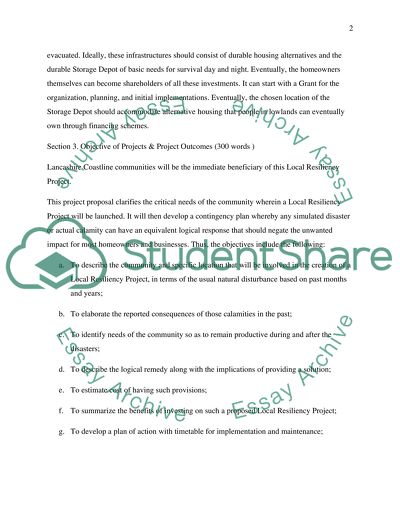Cite this document
(Local Resiliency Project Against Natural Hazards & Disasters Business Plan Example | Topics and Well Written Essays - 4000 words, n.d.)
Local Resiliency Project Against Natural Hazards & Disasters Business Plan Example | Topics and Well Written Essays - 4000 words. https://studentshare.org/environmental-studies/1423827-funding-proposal-local-resilienc-prject
Local Resiliency Project Against Natural Hazards & Disasters Business Plan Example | Topics and Well Written Essays - 4000 words. https://studentshare.org/environmental-studies/1423827-funding-proposal-local-resilienc-prject
(Local Resiliency Project Against Natural Hazards & Disasters Business Plan Example | Topics and Well Written Essays - 4000 Words)
Local Resiliency Project Against Natural Hazards & Disasters Business Plan Example | Topics and Well Written Essays - 4000 Words. https://studentshare.org/environmental-studies/1423827-funding-proposal-local-resilienc-prject.
Local Resiliency Project Against Natural Hazards & Disasters Business Plan Example | Topics and Well Written Essays - 4000 Words. https://studentshare.org/environmental-studies/1423827-funding-proposal-local-resilienc-prject.
“Local Resiliency Project Against Natural Hazards & Disasters Business Plan Example | Topics and Well Written Essays - 4000 Words”. https://studentshare.org/environmental-studies/1423827-funding-proposal-local-resilienc-prject.


